For many of us, coffee is an essential part of our daily routine. It perks us up in the morning, gets us through the mid-afternoon slump, and helps us stay alert during long work hours. However, according to Ayurveda, the ancient Indian system of medicine, consuming too much coffee - or any caffeine-rich beverage - can have adverse effects on our health. In this blog, we'll explore why reducing coffee intake is essential as per Ayurveda, how it affects our physical and mental health, and what we can do to cut back on coffee slowly and healthily.
Reasons to cut back on coffee:
Coffee can aggravate Vata and Pitta doshas: Ayurveda recognizes three doshas, or subtle energies, that govern the body and mind- Vata, Pitta, and Kapha. Each person has a unique combination of these doshas, and imbalances can lead to various health issues. According to Ayurveda, coffee has a heating and stimulating effect on the body, which can increase Pitta and Vata doshas, leading to symptoms like heartburn, acidity, inflammation, and restlessness. Therefore, if you have a tendency towards these doshas or suffer from digestive issues, reducing your coffee intake can be beneficial.
Coffee affects our sleep: Everyone loves a good cup of coffee to get through long work hours or study sessions, but consumption of Coffee is known to affect our sleep pattern which ultimately affects our body hygiene. As per Ayurveda, a good night's sleep is crucial for maintaining overall health and wellness, and consuming coffee regularly can interfere with this cycle. A disrupted sleep cycle can lead to chronic fatigue, mood swings, and an increased risk of heart disease, among other complications.
Coffee affects our nervous system: Consuming too much caffeine can overwork our nervous system, causing anxiety, restlessness, and tremors as well. The overworked nervous system leads to long-term problems like increased blood pressure, worsening heart conditions, and digestive issues.
Coffee can cause dehydration: Coffee acts as a diuretic and can cause dehydration, making us vulnerable to dehydration-related problems like dry skin, constipation, urinary tract infections, and kidney stones.
Coffee can disrupt hormonal balance: Coffee consumption has been associated with changes in hormonal levels, including cortisol, a stress hormone, and insulin, a hormone that regulates blood sugar levels. Excessive coffee consumption can lead to elevated cortisol levels, which can cause negative effects on the body, including weight gain, mood swings, and weakened immune function. Moreover, caffeine can stimulate the production of gastric acid, leading to digestive problems like acidity, bloating, and constipation. According to Ayurveda, balancing the hormonal system is crucial for overall wellness, and reducing coffee can help achieve this balance.
. Coffee can interfere with meditation and spiritual practices: Ayurveda recognizes the importance of a calm and clear mind in achieving mental and spiritual wellness. Coffee consumption can interfere with this by creating agitation and restlessness in the mind, making it difficult to cultivate mindfulness and focus. Moreover, coffee can be addictive and can create cravings, leading to a distraction from more meaningful pursuits like meditation, yoga, or spiritual practices. In this way, reducing coffee intake can help create a conducive environment for spiritual growth and self-awareness.
Tips for kicking the coffee habit:
While it may seem challenging to cut back on caffeine consumption, there are several healthy ways to do so. One way is to transition from coffee to herbal drinks or teas. Ayurveda recommends drinking digestive herbal teas like ginger, fennel, and mint instead of coffee as they balance the digestive fire and reduce inflammation in the body.
Another tip is to gradually decrease consumption over a period of time, with the goal of reducing dependence and slowly detoxifying the body of caffeine. Making healthy lifestyle changes, such as consuming more fruits and vegetables, maintaining moderate physical activity, and practicing meditation or mindfulness exercises, can also aid in reducing caffeine cravings.
In conclusion, coffee has become an integral part of our daily routine that people are unaware of. It's essential to understand that moderation in anything is the key to maintaining balance and well-being. Ayurveda provides us with a holistic approach to health, and reducing coffee intake allows us to balance our physical, mental, and spiritual well-being. At first, it may be tough, and also we might come across withdrawal systems, but in the long run, it helps us in maintaining good health. Therefore, we must reflect on our coffee consumption habits and try our best to cut back on caffeine-rich beverages gradually. Remember, it's not about deprivation or restriction, but rather about creating a positive, nourishing, and sustainable relationship with your body and mind.
Try Our Tulsi Chai
Savor our Tulsi Chai, a harmonious blend of organic herbs. Combining traditional chai warmth with the therapeutic benefits of Tulsi, every sip promises both flavor and wellness
Disclaimer
The sole purpose of these articles is to provide information about the tradition of Ayurveda. This information is not intended for use in the diagnosis, treatment, cure or prevention of any disease.






